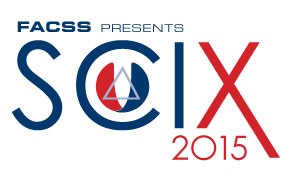News & Events
Research
SciX 2015, Presented by FACSS, Preliminary Program is Now Available September 18, 2015

SciX is the annual meeting of the Federation of Analytical Chemistry and Spectroscopy Societies (FACSS). The conference represents the future of international scientific exchange in the fields of analytical sciences – comprehensive, intimate, all inclusive. This is the meeting where all the member societies of FACSS present their newest, most innovative research.
Preliminary Program is now available. For a list of the scheduled sessions, click “Sessions”
SciX 2015 will take place on September 27 – October 2, 2015 at the Rhode Island Convention Center in Providence, RI.
ABSTRACT SUBMISSION DEADLINE FOR POSTER PRESENTATIONS IS JULY 31. Submit Abstract
Read More“The CT Meeting” Announced July 22, 2015
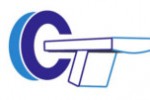
The 4th International Conference on Image Formation in X-Ray Computed Tomography (“The CT Meeting”) will be held July 18 – 22, 2016 in Bamberg, Germany. A call for participants and submissions has been issued by the organizing committee for this event which is “dedicated to basic problems related to X-ray CT.” Abstract Submissions by authors wishing to participate have a deadline of January 18, 2016. Interested parties should visit http://www.ct-meeting.org to find more information about the event and submission process.
ALERT Collaborators, Carl Crawford and Harry Martz will be coordinating a session on Security CT Applications. Any ALERT researchers who are interested in participating, or have questions about this session should contact Carl Crawford at [email protected].
TESSA02 Workshop Announced July 1, 2015

ALERT is pleased to announce it will be hosting the Second “Trace Explosives Sampling for Security Applications” (TESSA02) Workshop, which will be held on August 5th, 2015 at Northeastern University in Boston, MA. The title of the workshop will be “Fundamentals and Advances in Trace Sampling and Detection.” The TESSA02 Workshop, held in 2014, was the first in the series to deal with the development of a roadmap for understanding contact sampling for trace explosives detection. The topic of contact sampling was chosen for the workshop in order to support the Department of Homeland Security’s (DHS) objective of improving the performance of existing technologies.
For more information, visit the TESSA02 Workshop event page here!
ALERT Research Featured in The New York Times July 1, 2015
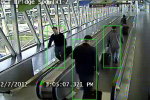
ALERT “Tag-and-Track” video surveillance research was featured in a recent New York Times article, which discussed the video analytics project being led by Prof. Octavia Camps and Prof. Mario Sznaier at Northeastern University.
The software developed by Profs. Camps and Sznaier, along with their fellow researchers and students, uses airport security cameras to detect suspicious behavior by passengers. The article makes note of the high success rate and capabilities of the software, as it is currently in use at the Cleveland Hopkins International Airport to detect passengers who try to enter secure areas of the airport through an exit lane.
Read MoreALERT Continues to Foster Collaboration at ADSA12 Workshop July 1, 2015
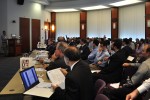
On May 12-13, 2015, the Twelfth Advanced Development for Security Applications Workshop (ADSA12) was held at Northeastern University in Boston, MA. The workshop focus was, “Screening of Personnel and Divested Items at the Checkpoint,” and was a continuation of the first workshop, ADSA01. The topic was chosen in order to support the Department of Homeland Security’s (DHS) objective of improving the performance of existing technologies and to improve the passenger experience at checkpoints. Another goal of the workshop was to support DHS’s objective to increase the participation of third parties, such as researchers from academia, national labs, and industry other than the incumbent vendors, in algorithm and system development for security applications.
The following topics were addressed at the workshop: emerging hardware; emerging algorithms and processes; improving the passenger experience and assessing and using risk. The topics were addressed from the perspectives of the TSA, airlines, and passengers.
The key findings from the workshop on what can be done to solve the checkpoint problems are: use of risk based screening including under-screening; improved concept of operations; integrating systems and data; setting standards for systems interfacing, data integration and testing in lab and field; developing better hardware and reconstruction software and identifying orthogonal technologies.
The next workshop, ADSA13, is scheduled for the fall of 2015, will be a continuation of ADSA12 and will concentrate on the following topics: trace and standoff detection; video analytics; application to mass transit and federal buildings; fusing orthogonal technologies; explosive threats; networking; laboratory and red-team testing; third party development of Automated Threat Recognition and reconstruction algorithms; machine learning; prevalence shifting; (trading off Probability of Detection for Probability of False Alarm); concept of operations; measuring and using risk; deterrence; and case studies.
Student Spotlight Interview with Mihindra Dunuwille July 1, 2015
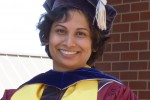
Congratulations to Mihindra Dunuwille, a spring 2015 Chemistry Ph.D. graduate at Washington State University (WSU), who has recently started working as a postdoc at the University of Utah! During her time at WSU, Mihindra worked on ALERT research under the guidance of Prof. Choong-Shik Yoo. Her thesis, “Pressure-induced Physical and Chemical Changes of Non-conventional Energetic Materials: Nitrate, Perchlorate and Peroxide Chemistries at High Pressures and High Temperatures,” focused on discerning the chemical properties of non-conventional materials that are widely used in terrorist activities in the hopes of developing techniques to mitigate explosives-related threats.
In order to understand how these chemicals are altered to become explosive, Mihindra performed experiments to determine the effects of physical and thermal conditions (e.g. pressure and temperature) on chemical properties on three types of oxidizers: nitrate, perchlorate and peroxide.
When asked about her experience working on this project, Mihindra describes her enthusiasm for the breadth of information that she was able to acquire just by tuning the physical variables (e.g. pressure) of these chemicals. Regarding the project’s overall mission, she states, “I’m passionate about how this can be used in real life applications, and that it can change people’s lives for the better.”
Mihindra has been drawn to physical chemistry since high school, and received her B.S. in Chemistry from the University of Colombo in Sri Lanka. She was originally introduced to Prof. Yoo’s research while at WSU on a prospective visit before accepting their offer to join the Ph.D. program in 2008. Of her experience working with Prof. Yoo, she remembers being encouraged to investigate the scientific basis of experimental observations on her own, instead of being handed the answers, and says, “It made me a better scientist.”
In her new role as a postdoc at the University of Utah, Mihindra has the opportunity to demonstrate her skills and experience from her previous project, while also getting the chance to explore new scientific techniques. Her current project, “Superconductivity of Lithium Rich Compounds,” will give her the chance to study the effects of high pressures and low temperatures on chemical properties, and will offer her the opportunity to get more experience with x-ray diffraction techniques. When asked about her career goals, she undoubtedly wants to continue doing research on explosives where she would like to have a positive impact on society, and would one day like to work for a national lab.
Mihindra’s enthusiasm for her work becomes quickly apparent when speaking with her, and is further reinforced by Prof. Yoo, who reflects, “She was smart, careful, responsible, and highly motivated both in her research and academic leadership roles… in short, she was an excellent graduate student with a high level of devotion and morale.”
Naval Academy Midshipmen Participate in ALERT Research July 1, 2015
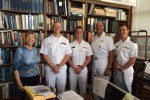
Annapolis Naval Academy Midshipmen, Andrew Kelly and Gabe Lackey, are spending a month this summer doing ALERT research at the University of Rhode Island (URI), in Kingston, RI. Andrew and Gabe are Systems Engineering majors and have elected to use this time to work with the URI Energetic Materials Research Group. Their work includes hands-on experience with a myriad of aspects of explosives research at both the laboratory scale and in the field. Projects include using various instruments for physical characterization of both military explosives and homemade/improvised energetic materials.
Midshipman Lackey (pictured, middle) has said of his experiences,
“It has been very interesting to see the ‘behind the scenes’ process that takes an idea and eventually lets it reach the front lines, helping sailors, marines, and all military men and women.”
Midshipman Kelly (pictured, far right) says of his experiences working with ALERT scientists at URI,
“Working alongside the graduate students under Dr. Oxley has been informative in linking the numerous research areas to future military application, as well as what is currently being used.”
ALERT Summer Research Experience for Undergraduates (REU) Begins July 1, 2015

This summer, ALERT is hosting 5 undergraduate students who are participating in the 10-week REU program. At Northeastern University, two students are working with Prof. Carey Rappaport, one student is working with Prof. Jose Martinez, and one student is working with John Beaty. ALERT is also hosting a student at the University of Puerto Rico Mayagüez who is doing research with Prof. Samuel Hernandez.
The ALERT REU program is partnering with other REU programs in the College of Engineering to build a cohort of students who jointly attend professional development meetings and program activities. At the end of the summer each student will give a final presentation on their research project.
ALERT Student Spotlight: Yolanda Rodriguez-Vaqueiro April 30, 2015
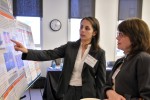
April 30, 2015
Some us are lucky enough to know what we want to do with our lives at an early age. For Yolanda Rodriguez-Vaqueiro, an ALERT Research Assistant and recent doctoral degree recipient in the Electrical and Computer Engineering program at Northeastern University, a career in STEM has been a lifelong dream.
“From the very beginning, my brain was a mathematical one. Instead of a left and right brain, I like to say that I have two left brains. For example, there is only one answer to 2 + 2. For me, that is perfection!” declares Rodriguez-Vaqueiro with good humor.
During her four-year involvement with ALERT, Rodriguez-Vaqueiro’s primary research focus has been developing compressive sensing for standoff detection of security threats at distances of 10 to 50 meters using millimeter wave radar. This research is highly relevant to the Homeland Security Enterprise, as it could be utilized by law enforcement and first responders to detect explosives and weapons from a safe distance. Rodriguez-Vaqueiro is credited with proposing a new geometric configuration for a multiple-bistatic, millimeter wave radar imaging system, which could potentially be used for threat detection in outdoor environments, such as sporting events and music festivals.
Under the guidance of advisors Professor Jose Martinez-Lorenzo and Professor Carey Rappaport, Rodriguez-Vaqueiro was given the freedom to test out new ideas and come into her own as a researcher. According to her, “My capacity to do research has improved significantly. I learned how to take an idea and apply it to the real world by creating simulations and collecting data from measurements done in the lab. Both Professor Martinez and Professor Rappaport were excellent mentors. I was able to give them my very best work thanks to their guidance. They allowed me a great deal of independence to try new things on my own, while pushing me to become a better researcher.”
Rodriguez-Vaqueiro points out that research does not come without difficulty. She states, “When you’re doing research, every project and every new day presents challenges. For example, every time we get data from the lab, it’s a challenge to decipher that data, and then take that data and turn it into an image for others to understand. I’m a person who enjoys challenges though.”
During her time with ALERT, Rodriguez-Vaqueiro was a prolific writer. She authored and collaborated on a total of 14 peer-reviewed publications, receiving the Best Paper Award (2012 IEEE Homeland Security Technology Conference), the Best Propagation Paper Award (2014 European Conference on Antennas and Propagation), and most recently, the Burke/Yannas Bioengineering Best Paper Award (47th Annual Meeting of the American Burn Association), which recognizes original research studies in the field of bioengineering. Additionally, Rodriguez-Vaqueiro is the 2015 recipient of the Electrical and Computer Engineering Research Impact Award at Northeastern University. Publishing her research is among her greatest achievements: “Every time I publish a paper, it’s a huge milestone for me, because you finally have the opportunity to share the results of your research with the public. You may have been working on a project for a long time—six months, or a year—and then you get to write it all down. It’s very exciting.”
Despite balancing her roles as an ALERT Research Assistant and doctoral candidate, Rodriguez-Vaqueiro made time to mentor other students, introducing approximately 15 high school and undergraduate students to STEM research. She especially enjoyed her experience mentoring high school students through Young Scholars, a program operated by the Northeastern University Center for STEM Education: “It was very rewarding for me to assist high school students, because although they have little research experience, they were able to obtain meaningful results from scratch. They also learned some basics in coding. It was good for them, and for me.”
“Without a doubt,” claims her advisor, Professor Martinez-Lorenzo, “She is one of the most talented students that I have ever had during my academic career. She was the Ph.D. student that every faculty member desires in a research group—a student who sets the example of true leadership. I believe Yolanda will have an outstanding academic career solving important and difficult engineering problems with her unique insight and her quick mind.”
Rodriguez-Vaqueiro plans to continue her research and mentoring efforts in a post-doctoral position at the University of Vigo in Pontevedra, Spain, where she will be exploring electromagnetic engineering in regard to checkpoint security applications, and will no doubt, inspire other STEM students to follow their dreams.
Borja Gonzalez and Prof. Carey Rappaport, win the Best Antenna Design and Application Paper Award at EuCAP 2015 April 29, 2015
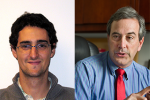
Congratulations to our ALERT researchers, Borja Gonzalez (PostDoc) and Prof. Carey Rappaport, who won the Best Antenna Design and Application Paper Award at the EuCAP 2015 – the 9th European Conference on Antennas and Propagation. Their paper, “Multistatic Nearfield Imaging Radar for Portal Security Systems Using a High Gain Toroidal Reflector Antenna,” was presented by Prof. Rappaport at the conference, held this year in Lisbon, Portugal on April 12th – 17th. Selected from over 1,000+ papers presented throughout the conference, ALERT proudly congratulates Carey and Borja on this impressive achievement.

